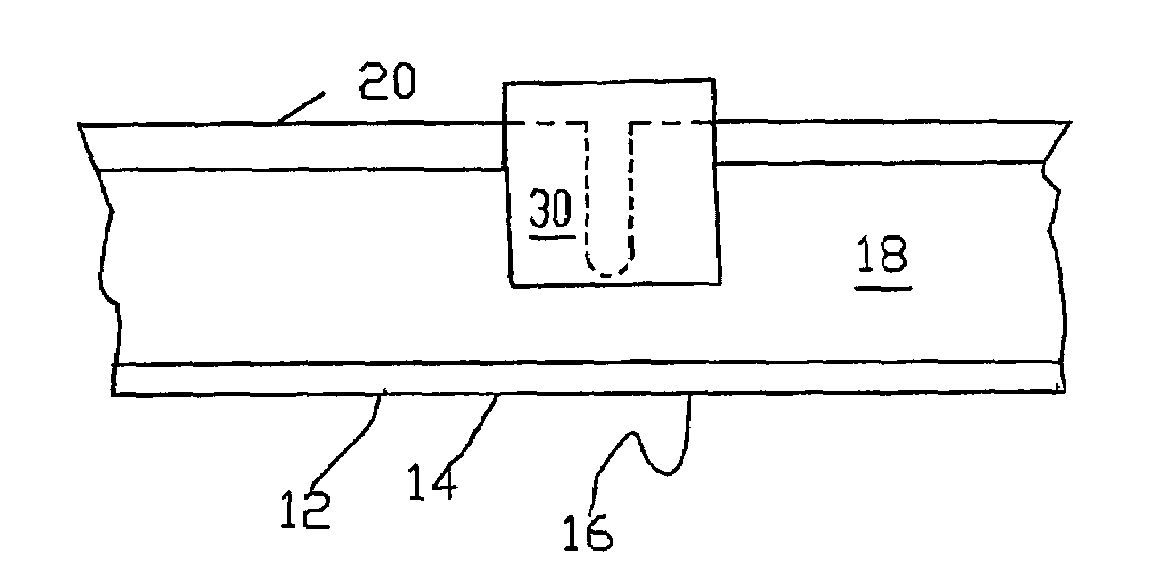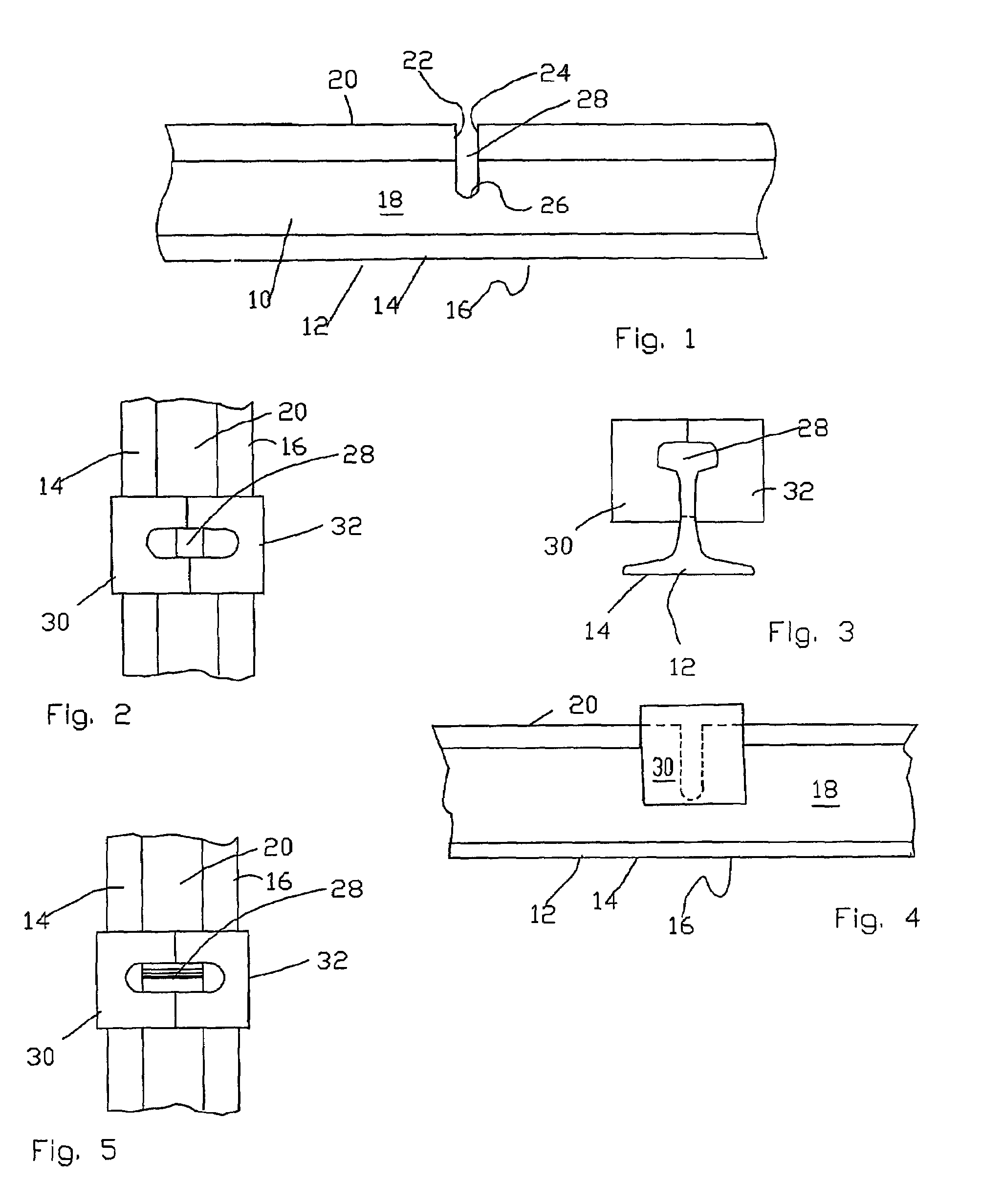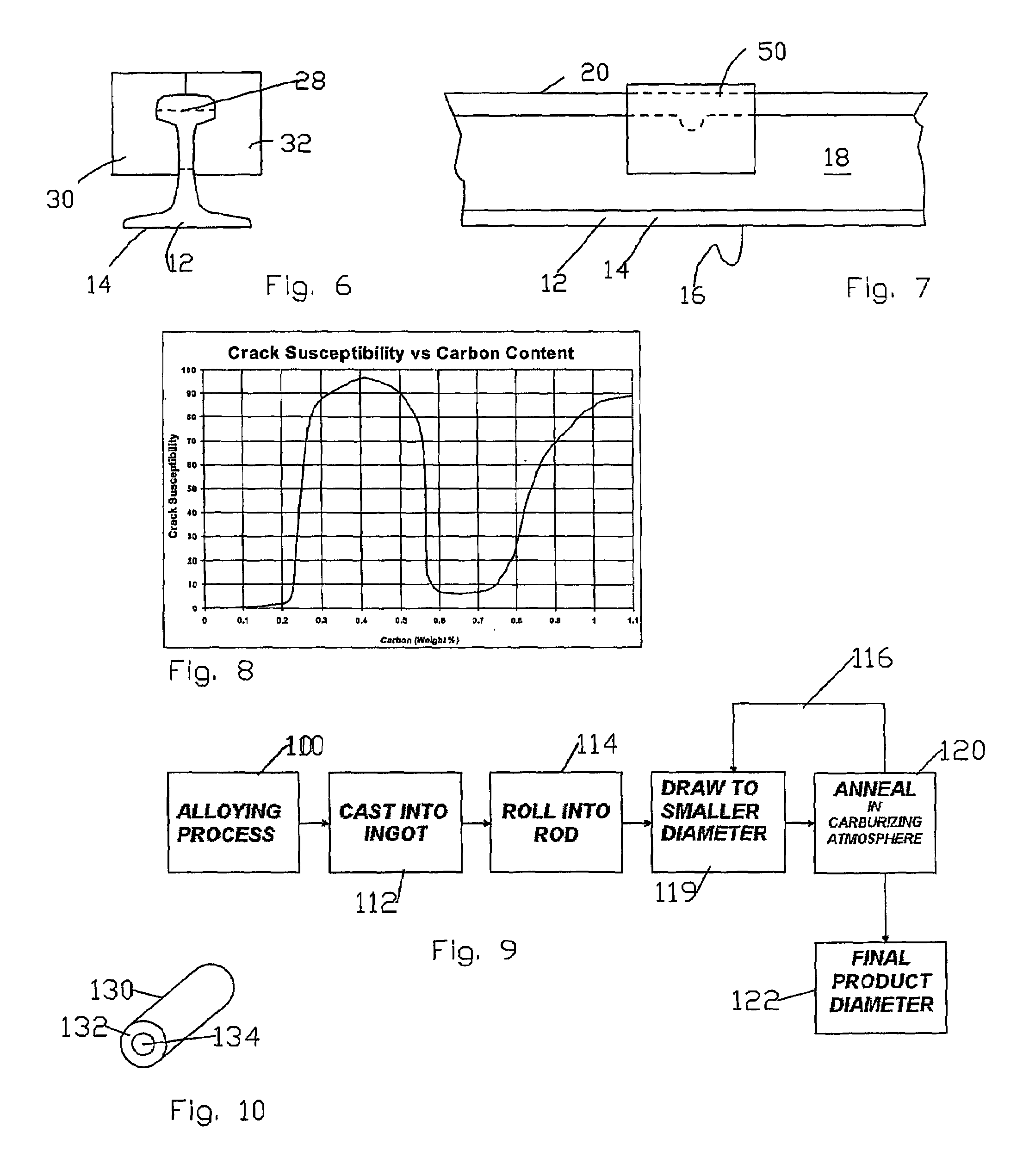Method of repairing a rail
a rail and rail technology, applied in the field of rail rail repair, can solve the problems of non-destructive defects, defects that cannot be identified, and rail rails may be manufactured with internal defects, so as to minimize labor and reduce the amount of tim
- Summary
- Abstract
- Description
- Claims
- Application Information
AI Technical Summary
Benefits of technology
Problems solved by technology
Method used
Image
Examples
Embodiment Construction
[0051]While the present disclosure will be described fully hereinafter with reference to the accompanying drawings, in which a particular embodiment is shown, it is to be understood at the outset that persons skilled in the art may modify the disclosure herein described while still achieving the desired result. Accordingly, the description that follows is to be understood as a broad informative disclosure directed to persons skilled in the appropriate art and not as limitations on the present disclosure.
[0052]A railroad rail 10 is typically formed having a base 12 with opposed flanges 14, 16, an upstanding web 18 extending upward from the base 12 between the flanges 14, 16 and a head 20 at the top of the web. The repair system or method begins when a rail defect is identified and located, such as by using an ultrasonic rail-testing car. The ultrasonic rail-testing car can precisely locate and mark the area of the rail containing the defect. Additionally, manual testing of the defect...
PUM
| Property | Measurement | Unit |
|---|---|---|
| length | aaaaa | aaaaa |
| length | aaaaa | aaaaa |
| length | aaaaa | aaaaa |
Abstract
Description
Claims
Application Information
 Login to View More
Login to View More - R&D
- Intellectual Property
- Life Sciences
- Materials
- Tech Scout
- Unparalleled Data Quality
- Higher Quality Content
- 60% Fewer Hallucinations
Browse by: Latest US Patents, China's latest patents, Technical Efficacy Thesaurus, Application Domain, Technology Topic, Popular Technical Reports.
© 2025 PatSnap. All rights reserved.Legal|Privacy policy|Modern Slavery Act Transparency Statement|Sitemap|About US| Contact US: help@patsnap.com



